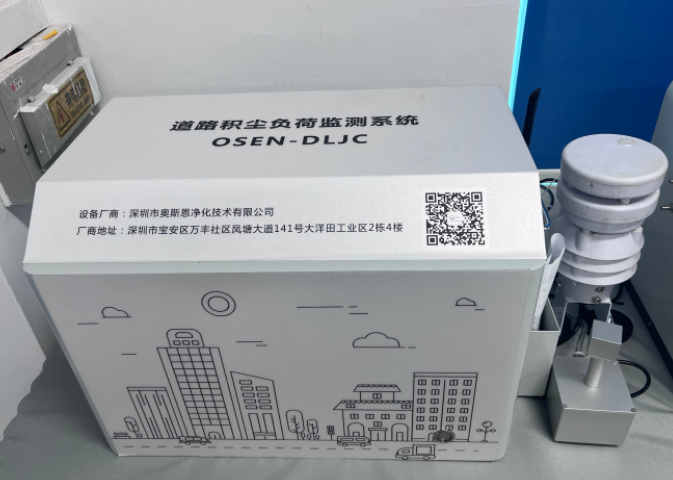Background of the On-Road Terminal for Road Dust Pollution Monitoring
With the accelerated urbanization process, the traffic volume on urban roads has surged, and activities such as construction and material transportation have become frequent, leading to increasingly prominent road dust pollution problems. Road dust can be re-suspended under the action of vehicle movement and wind, becoming an important source of particulate matter pollution such as PM1, PM2.5, and PM10, which affects atmospheric environmental quality and citizens´ respiratory health. It may also seep into the soil and groundwater with rainwater, posing potential threats to the ecological environment. In addition, severe road dust can reduce road visibility, increase hidden dangers to traffic safety, affect the urban appearance, and restrict the process of building livable cities.
In traditional road dust monitoring, manual sampling and laboratory analysis are mostly adopted, which are time-consuming and labor-intensive, have a long monitoring cycle, and limited monitoring scope. It is difficult to achieve full-coverage and dynamic monitoring of key areas such as urban key roads, construction site surroundings, and industrial enterprise peripheries. Manual monitoring can only obtain static data of discrete points, failing to capture the spatial distribution laws and change trends of dust pollution in real time. This results in inaccurate pollution source tracing and lack of targeted governance measures, making it difficult to meet the needs of refined environmental management.

Equipment Introduction
The OSEN-DLJC On-Road Terminal for Road Dust Pollution Monitoring, developed by Osen, is mainly used for real-time online monitoring of particulate matter in the atmosphere and dust raised by road vehicles during driving. The equipment transmits the collected monitoring data to an intelligent cloud platform for analysis and processing, providing users with multi-dimensional monitoring services, including generating on-road route maps, displaying particulate matter values at each monitoring point, and drawing pollution cloud maps.

Equipment Features
High-Precision Positioning
Adopting mainstream positioning technology in the industry, it can capture the position information of the monitoring vehicle in real time.
Real-Time On-Board Viewing
Equipped with a supporting tablet APP, on-road personnel can grasp the dynamic changes of road monitoring data at any time and adjust equipment configuration parameters according to actual monitoring needs.
High-Quality Core Components
Equipped with imported particulate matter sensors and combined with a unique dust-proof structure design, it can simultaneously output four types of particulate matter monitoring data: PM1, PM2.5, PM10, and TSP.
Product Composition
The on-road monitoring system for road dust load is composed of multiple functional units, including a particulate matter collection unit, a particulate matter monitoring unit, a data collection and transmission unit, a power supply unit, a vehicle positioning system, and an auxiliary unit (the auxiliary unit includes components such as a meteorological parameter tester, video surveillance equipment, and calibration equipment).
Within the scope of urban central areas, the equipment can conduct on-road monitoring of key areas such as expressways, primary and secondary trunk roads, some branch roads, roads around construction sites, and roads around industrial enterprises. The data generated during monitoring is transmitted to the platform management system through a wireless network. Users can real-time view on-road trajectories, real-time monitoring values, pollutant concentration fluctuation curves, and other content through tablet terminals or WEB terminals, obtaining various valuable monitoring information.
The platform integrates functions such as online monitoring, data calculation, map matching, video surveillance, data transmission, and automatic statistics. It can automatically complete dust load data monitoring while the monitoring vehicle is running normally, featuring advantages such as no interference with traffic operation, high monitoring efficiency, and intuitive and visible monitoring results.
Technical Features
Integrates multiple functions including protection, measurement, signal transmission, and data display, supporting multiple protection modes such as short circuit, overload, and low voltage. Each functional module can be flexibly enabled according to needs.
Adopts advanced industrial-grade chips, with bus signals transmitted inside the chips. The electrical isolation and electromagnetic shielding design comply with relevant industry standards, ensuring the hardware system has strong anti-interference ability and stable working reliability.
Mature and reliable technical principles are adopted in the detection, collection, and analysis links, enabling it to adapt to the test of long-term on-site operating environments.
Supports real-time display of on-board mobile point dust monitoring data, with monitoring locations not limited to fixed scenarios; no additional brackets are required, and it can be adapted to various vehicle types; the main unit of the detector selects products from internationally renowned brands.
During sampling, the detector collects 1 monitoring value per second. It can maintain normal working status without affecting monitoring accuracy under the conditions of ambient temperature ranging from -10℃ to 40℃, relative humidity ≤80%, and ambient wind force below level 4.
On-site monitoring data can be extracted through platform export and other methods; the detector has a built-in GPS module, and the exported raw data will be attached with GPS point information; the data acquisition module is responsible for controlling the operation of the detection equipment and transmitting the monitoring data to the computer system.
Keyword:



